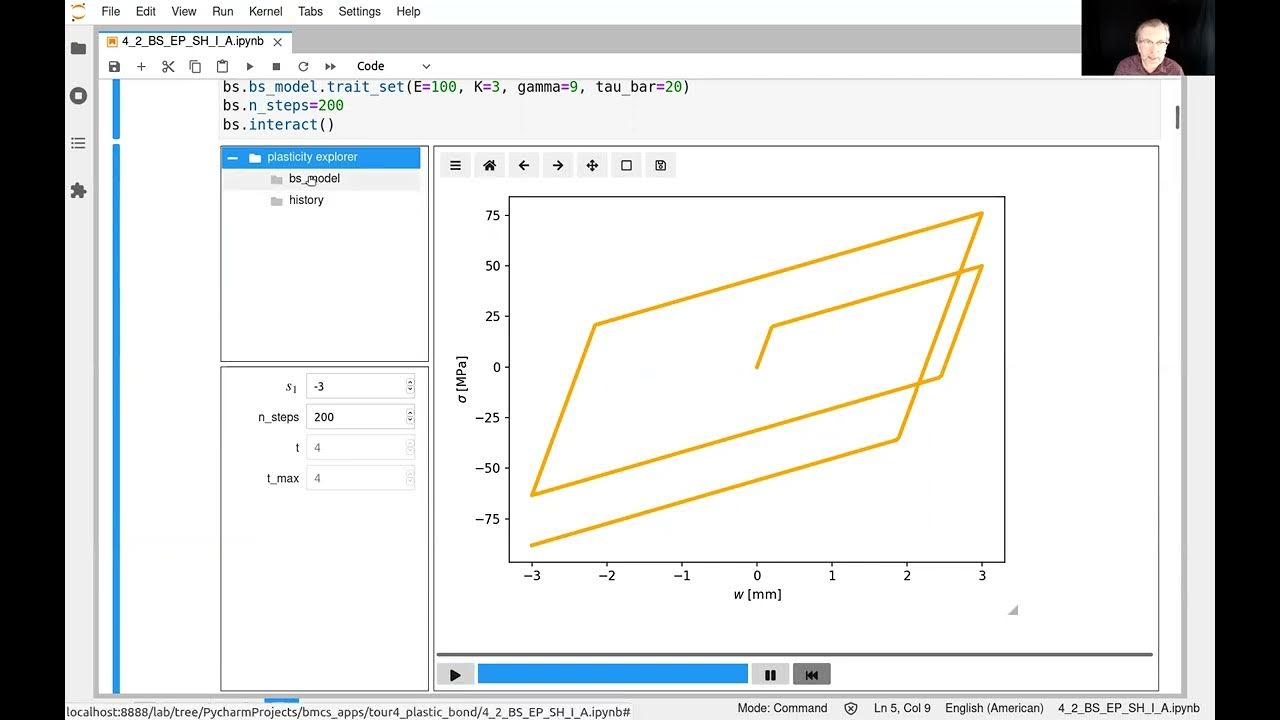Understanding plasticity theory (for Mises UMAT)
Summary
TLDRThis video is the first in a series designed to guide users through the process of writing a plasticity subroutine, focusing on Mises plasticity. It covers the basics of plastic deformation, including stress-strain behavior, strain hardening, and the concept of effective stress and plastic strain. The Mises yield criterion, normality hypothesis, and consistency condition are also explained. The video introduces essential concepts for understanding how materials yield under stress and how plastic deformation is modeled. Subsequent videos will dive into solving Mises equations and implementing them in a UMAT (User-defined Material Subroutine).
Takeaways
- 😀 The stress-strain curve begins with an elastic region where deformation is reversible, and material returns to its original state when the load is removed.
- 😀 The point at which plastic deformation starts is known as the yield stress, marking the transition from elastic to plastic behavior.
- 😀 Plastic strain is the permanent deformation that remains after the load is removed, while elastic strain is the recoverable part.
- 😀 Flow stress increases with plastic strain, demonstrating the phenomenon of strain hardening in materials.
- 😀 Perfectly plastic behavior assumes constant flow stress, while linear hardening assumes a linear relationship between flow stress and plastic strain.
- 😀 Effective stress is a scalar quantity used to assess whether a material is in the plastic region, considering the full stress state in three dimensions.
- 😀 Effective plastic strain represents the accumulated plastic strain and is crucial for analyzing material behavior in plasticity.
- 😀 The Misses yield criterion states that plastic deformation occurs when effective stress exceeds the material's flow stress.
- 😀 The Misses criterion assumes that material behavior is independent of hydrostatic stress, meaning pressure does not affect plastic deformation.
- 😀 The normality hypothesis in plasticity dictates that the direction of plastic strain is normal to the yield surface, guiding the material's flow direction.
- 😀 The consistency condition ensures that the yield function remains zero during plastic deformation, helping to calculate the magnitude of plastic strain increment.
Q & A
What is the main focus of this video series?
-This video series focuses on guiding viewers step by step to write their first plastic humid subroutine, starting with the basics of misses plasticity, followed by the algorithm used to solve misses equations, and ending with the related subroutine implementation.
What is the elastic region of a stress-strain curve?
-The elastic region of the stress-strain curve is the part where deformation is recoverable. In this region, when the applied load is removed, the material returns to its initial state, and the strain becomes zero. The slope of this region represents the material's Young's modulus.
What is the difference between elastic and plastic strain?
-Elastic strain is the part of the strain that is recovered when the applied load is removed, while plastic strain is permanent and does not recover after unloading. The total strain in the material is the sum of both elastic and plastic strains.
What does strain hardening refer to in material science?
-Strain hardening refers to the increase in flow stress as plastic strain increases. This behavior indicates that the material becomes stronger and more resistant to further plastic deformation as it undergoes plastic strain.
What is the concept of effective stress in plasticity?
-Effective stress is a scalar quantity that represents the stress tensor in a material, allowing for a comparison to the yield stress to determine if the material is in the plastic region or not. It is especially useful in multi-dimensional stress states.
How is the effective stress calculated for a material under three-dimensional stress?
-Effective stress is calculated using the deviatoric stress tensor. It is a measure of the stress state of the material, and it excludes the effects of hydrostatic stress, which do not influence the plastic behavior of metals.
What is the significance of the J2 criterion in plasticity?
-The J2 criterion, also known as the second invariant of the deviatoric stress tensor, is often used in plasticity to define the yield condition. It is related to the effective stress and provides a way to predict when plastic deformation will occur.
How does the Misses yield criterion define plastic deformation?
-The Misses yield criterion defines plastic deformation as occurring when the effective stress equals or exceeds the flow stress. If the yield function (effective stress minus flow stress) is negative, the material is in the elastic region; if zero, it is in the plastic region.
What is the normality hypothesis in plasticity?
-The normality hypothesis states that the direction of plastic strain increment is normal to the yield surface. This means that the direction of flow during plastic deformation is determined by the normal to the yield surface in stress space.
What is the consistency condition in plasticity?
-The consistency condition ensures that during plastic deformation, the yield function remains zero. It dictates that as the material deforms plastically, the yield surface is not violated, and the value of the yield function stays constant at zero.
What is the relationship between plastic strain and effective plastic strain in plasticity?
-The effective plastic strain is the scalar measure of the plastic strain rate. In plasticity, the material deforms incrementally, and the rate of change of plastic strain is represented by the effective plastic strain rate, which is used to calculate material behavior under stress.
Outlines

This section is available to paid users only. Please upgrade to access this part.
Upgrade NowMindmap

This section is available to paid users only. Please upgrade to access this part.
Upgrade NowKeywords

This section is available to paid users only. Please upgrade to access this part.
Upgrade NowHighlights

This section is available to paid users only. Please upgrade to access this part.
Upgrade NowTranscripts

This section is available to paid users only. Please upgrade to access this part.
Upgrade Now5.0 / 5 (0 votes)





